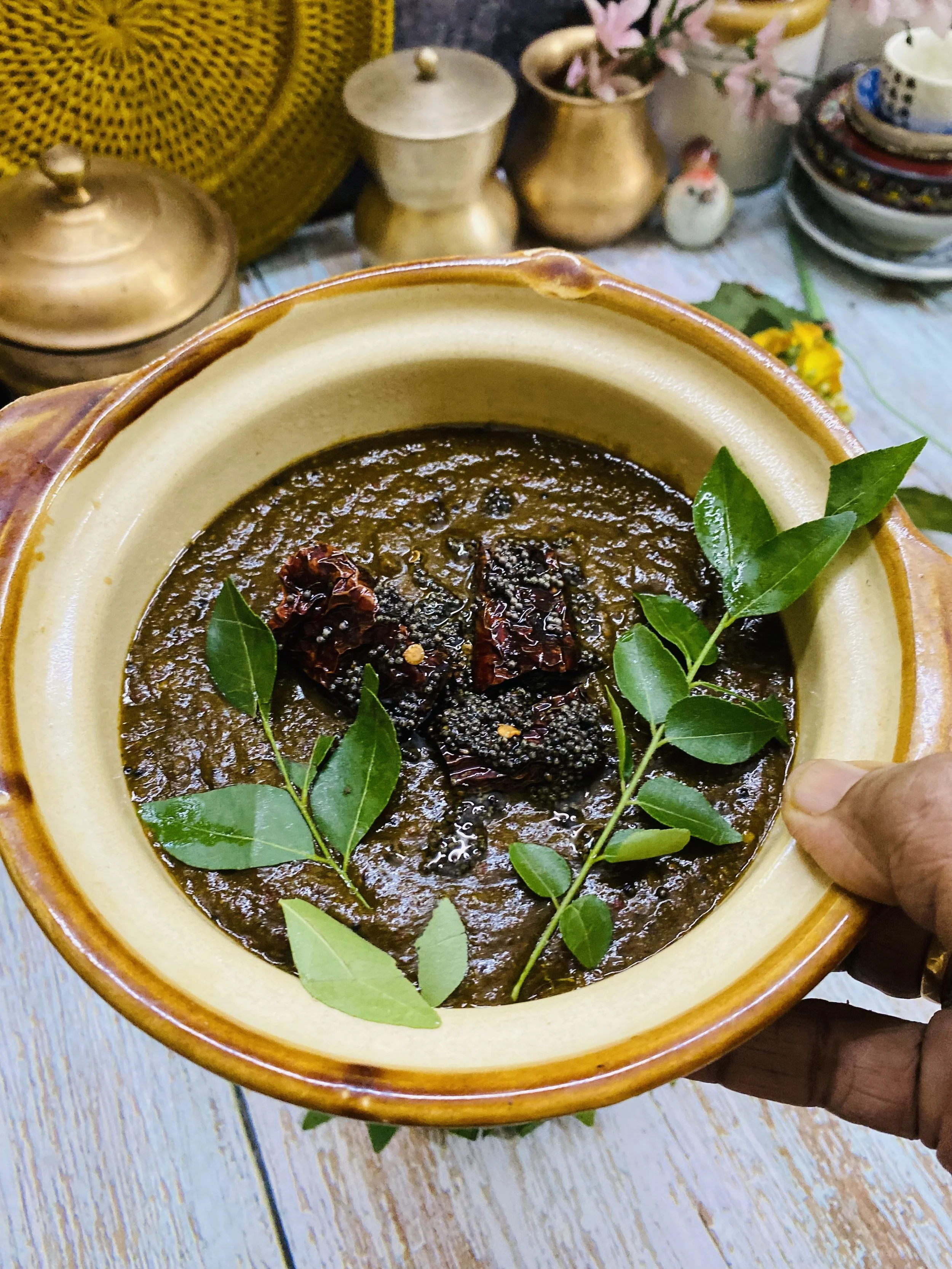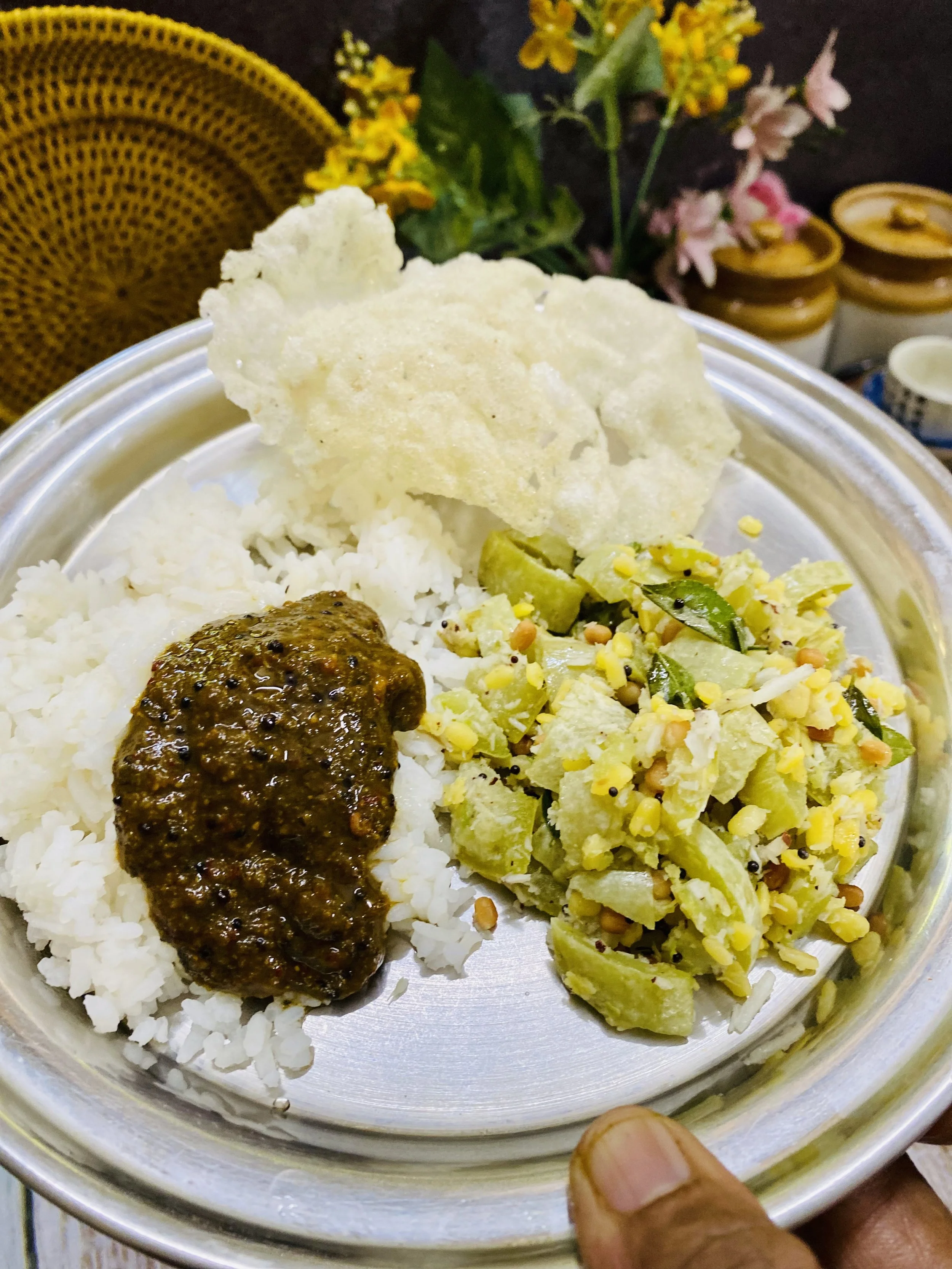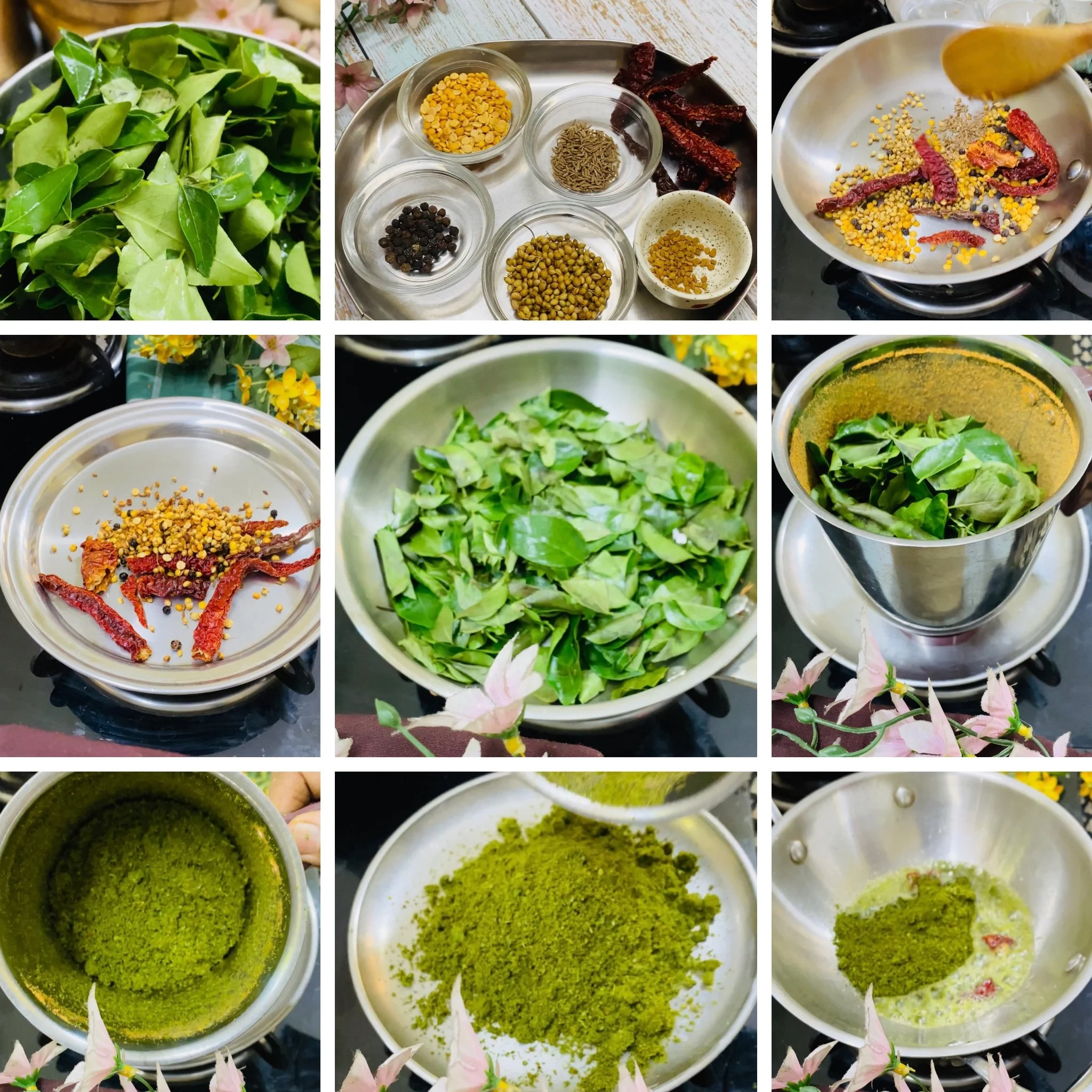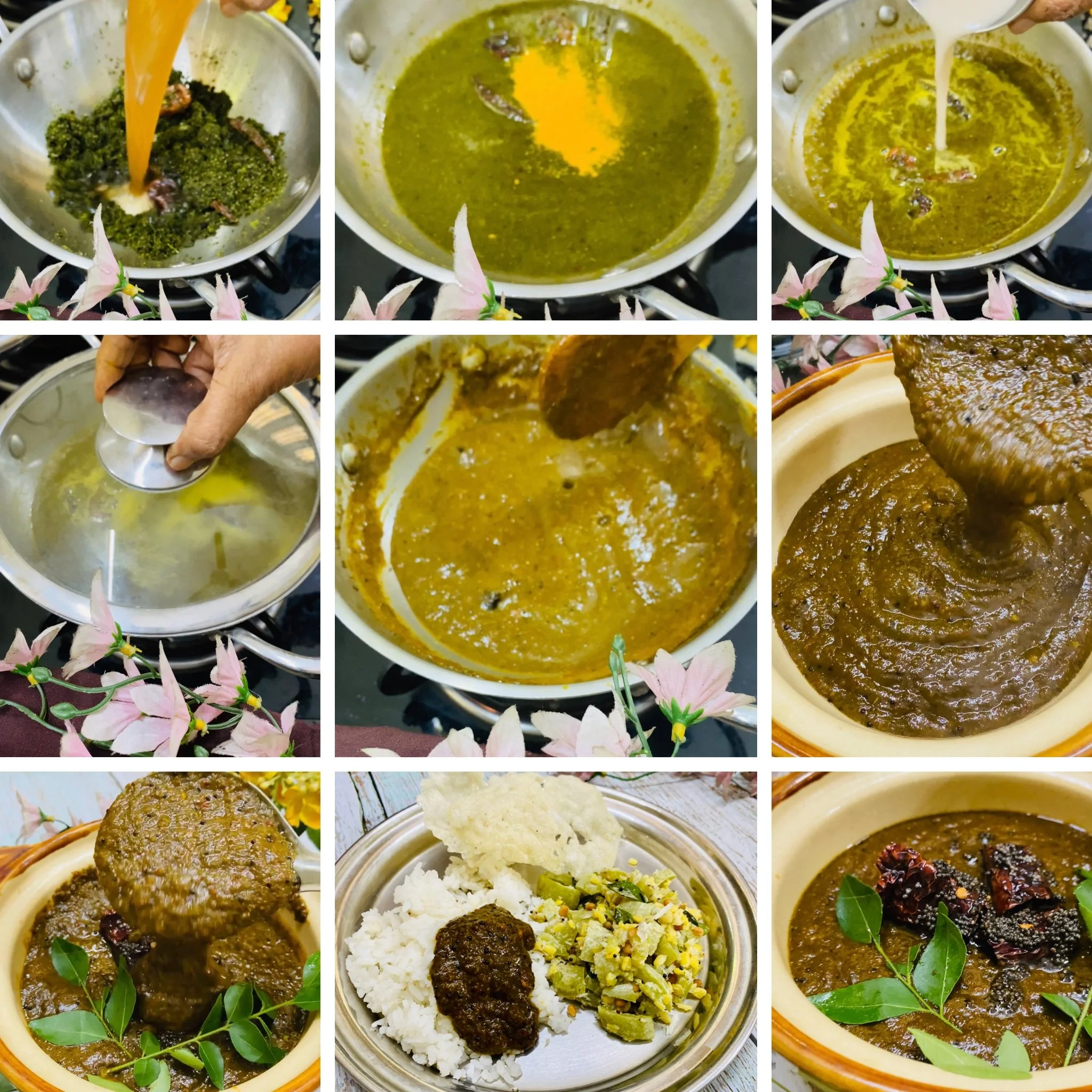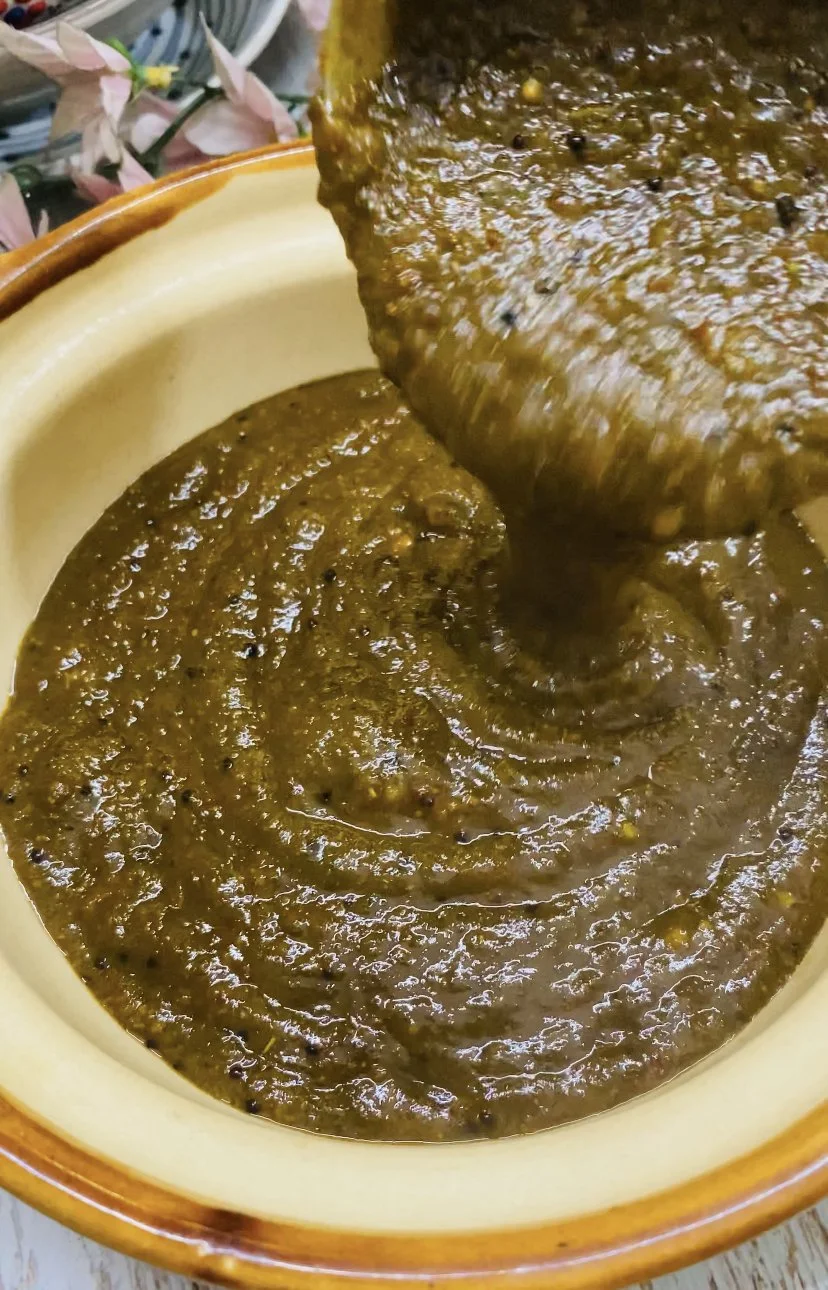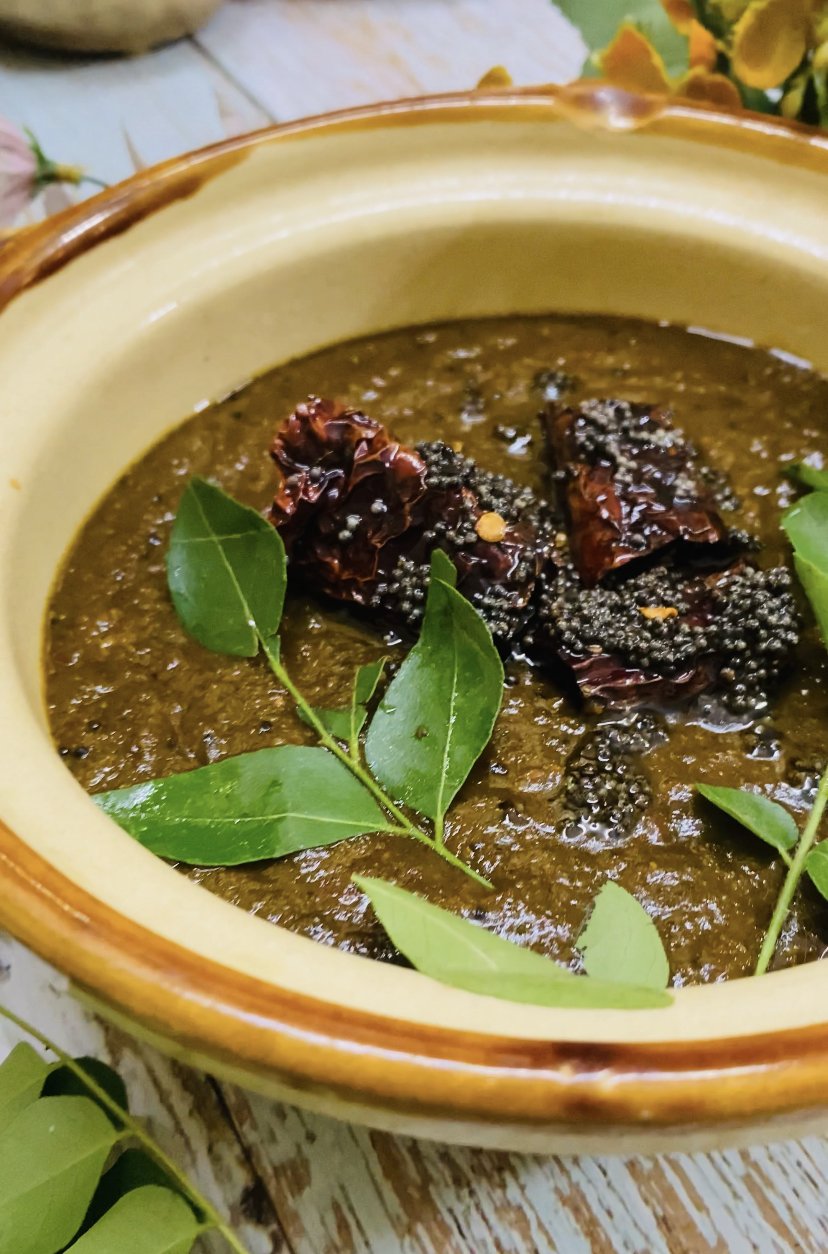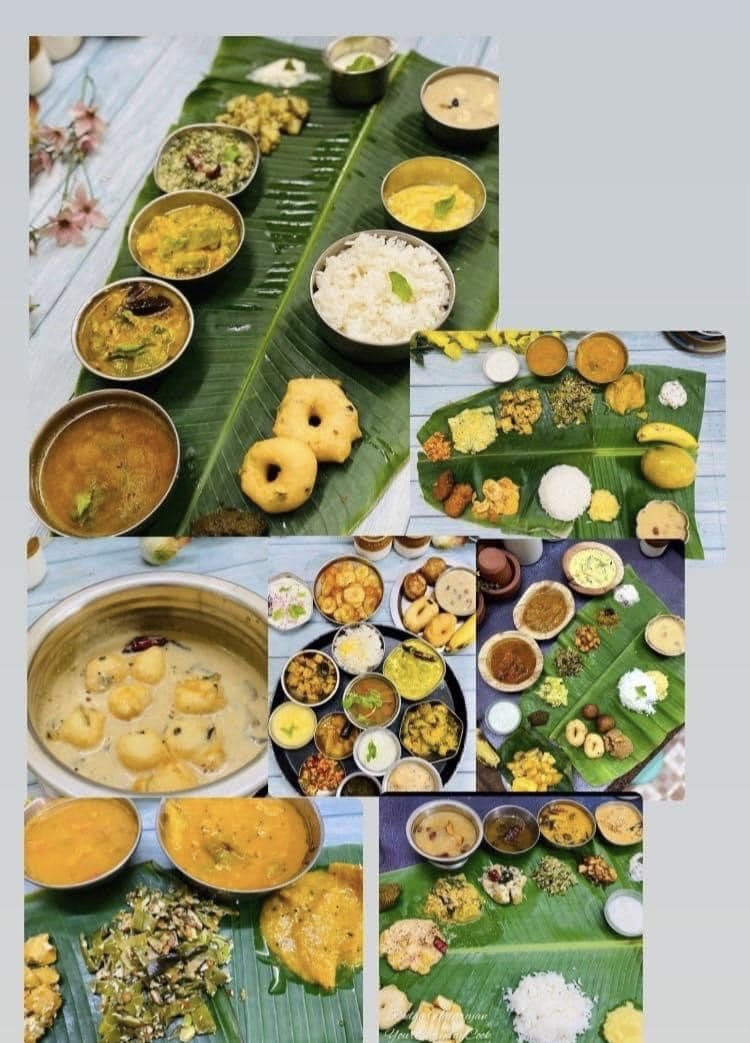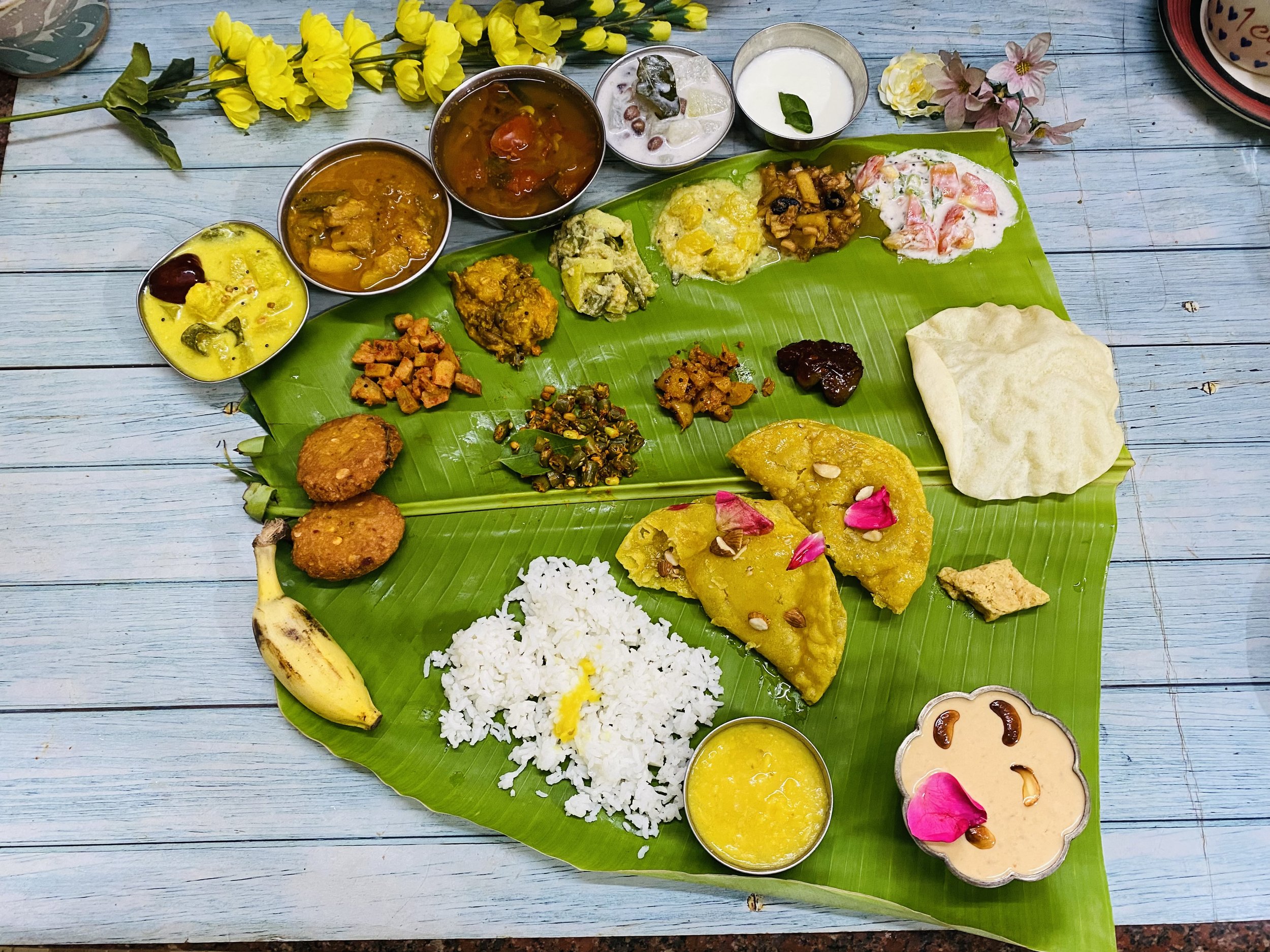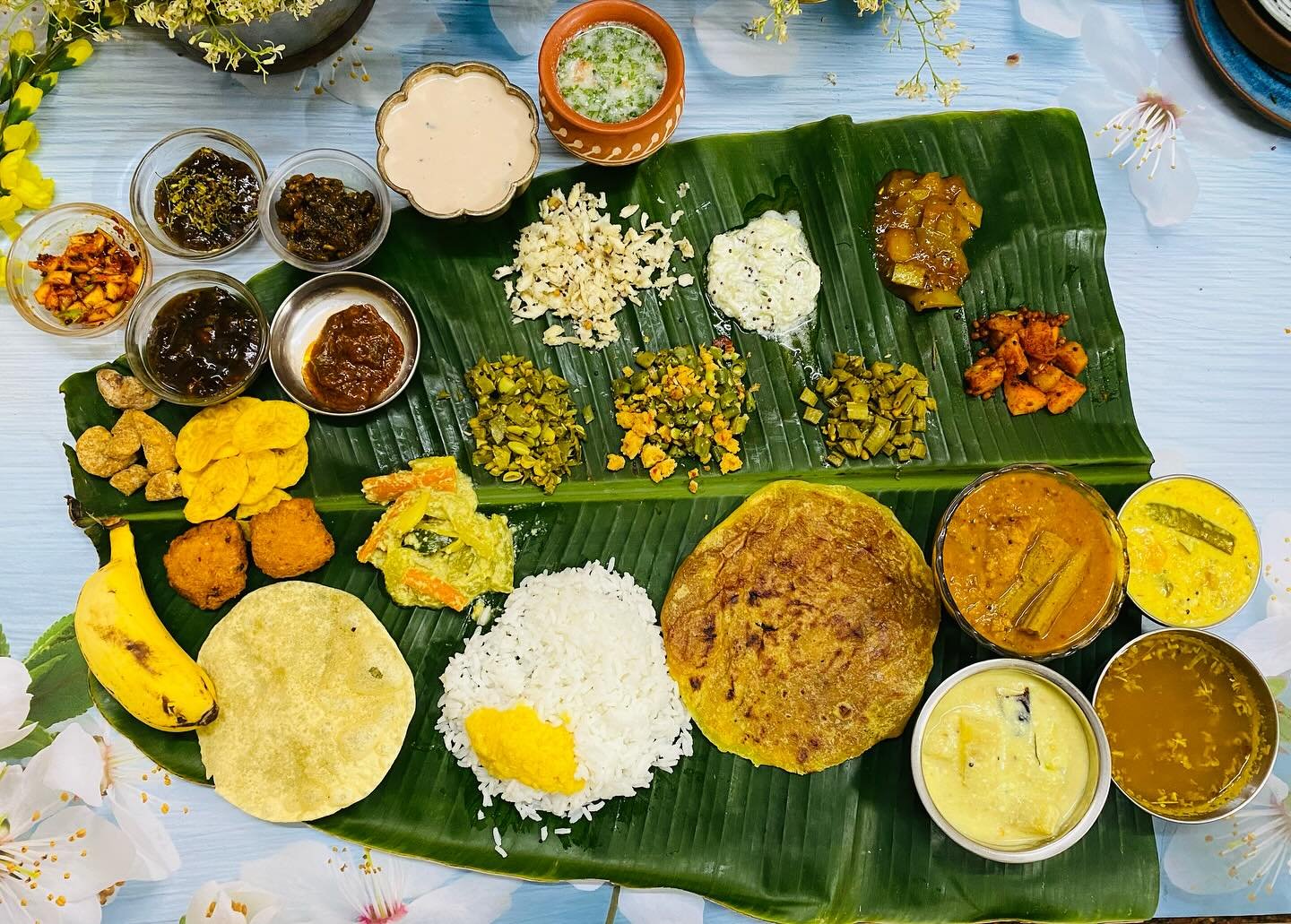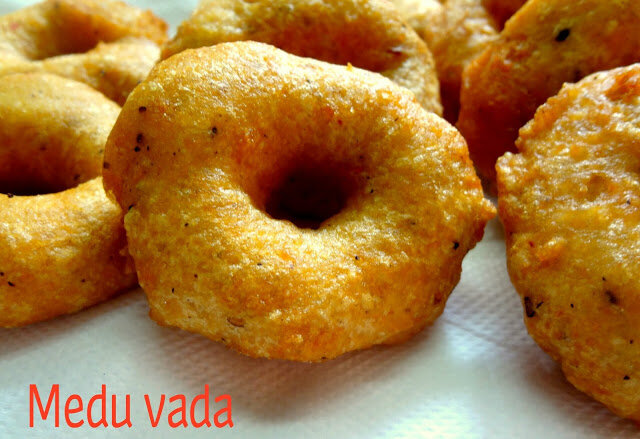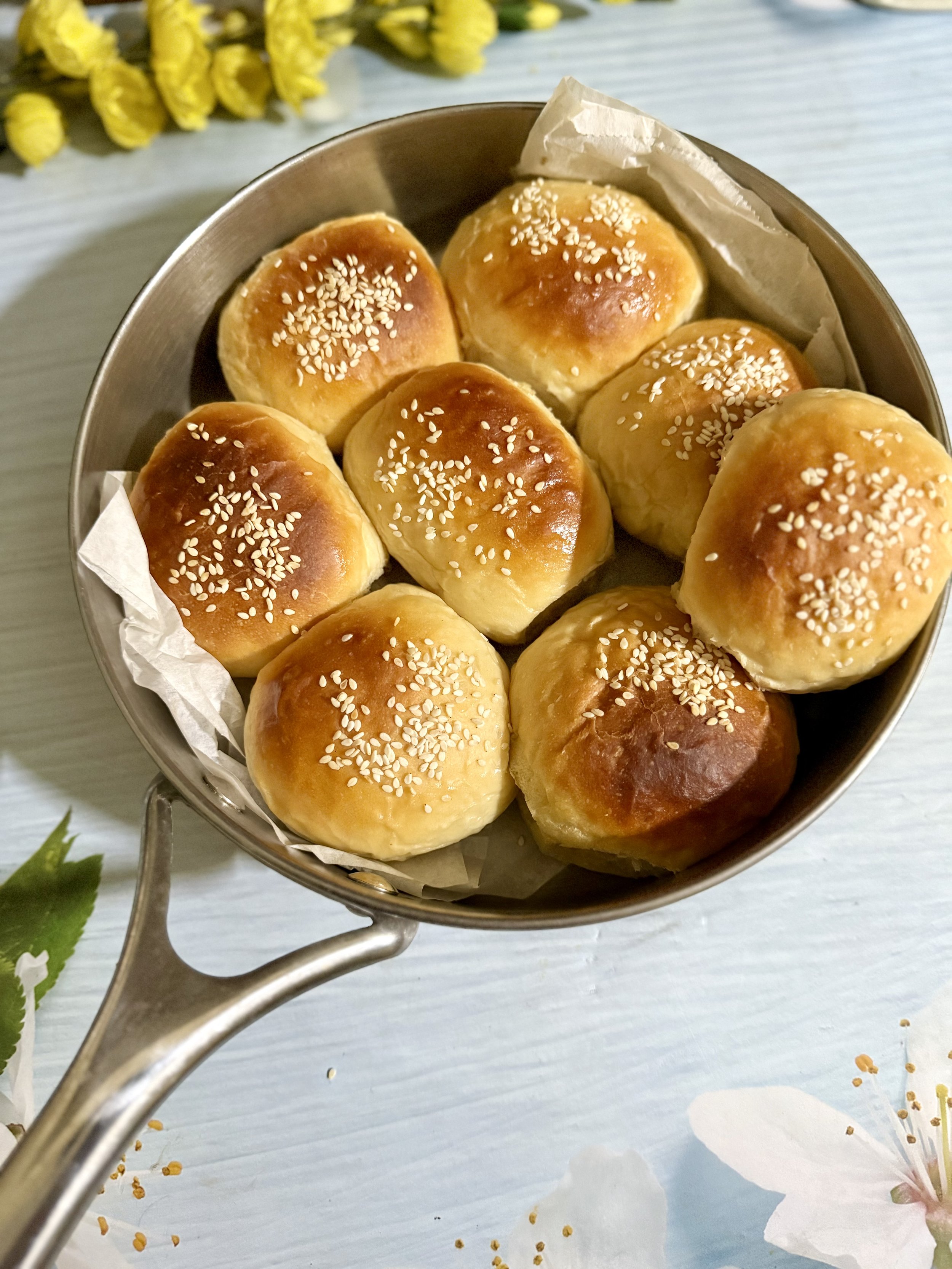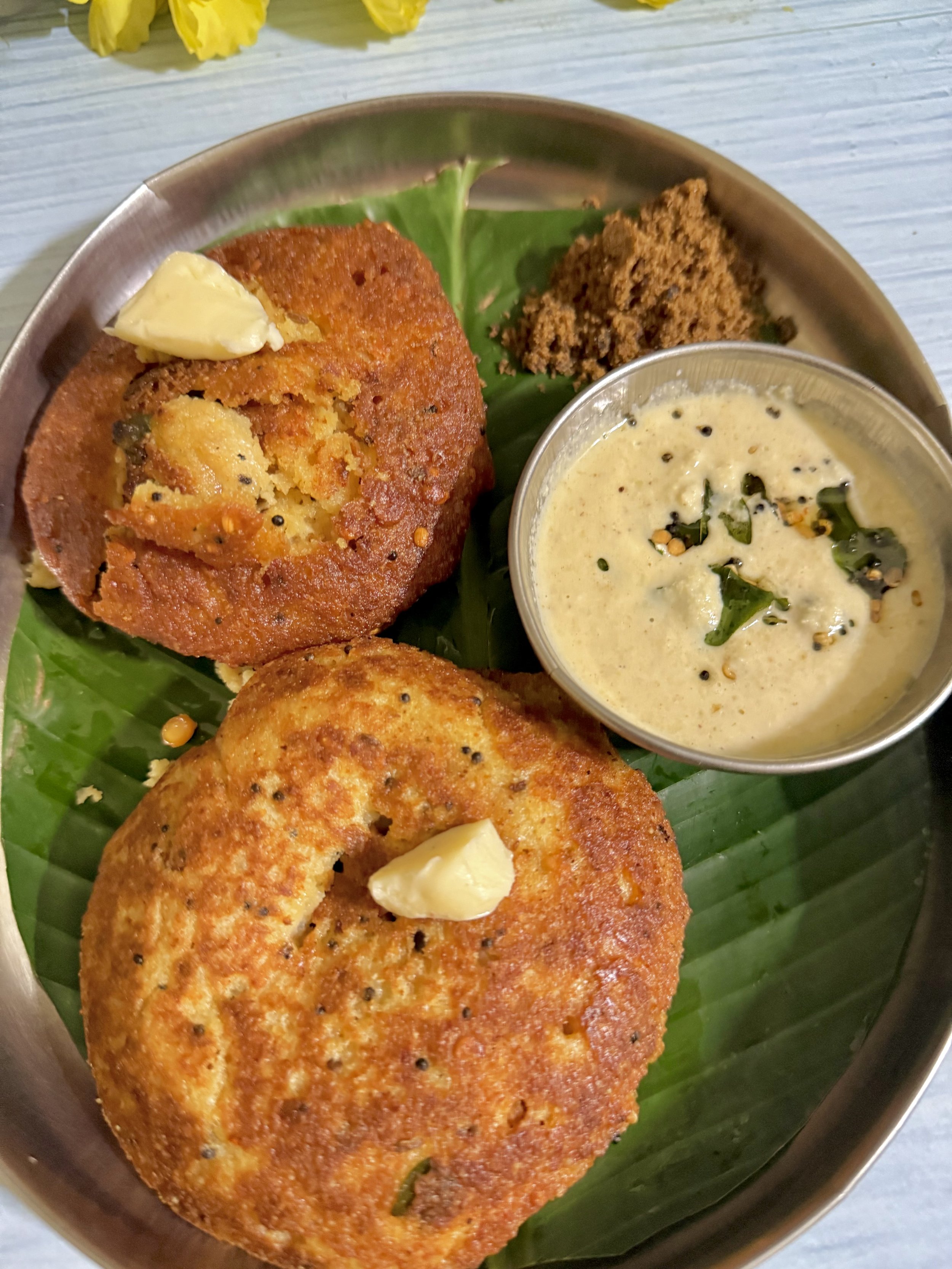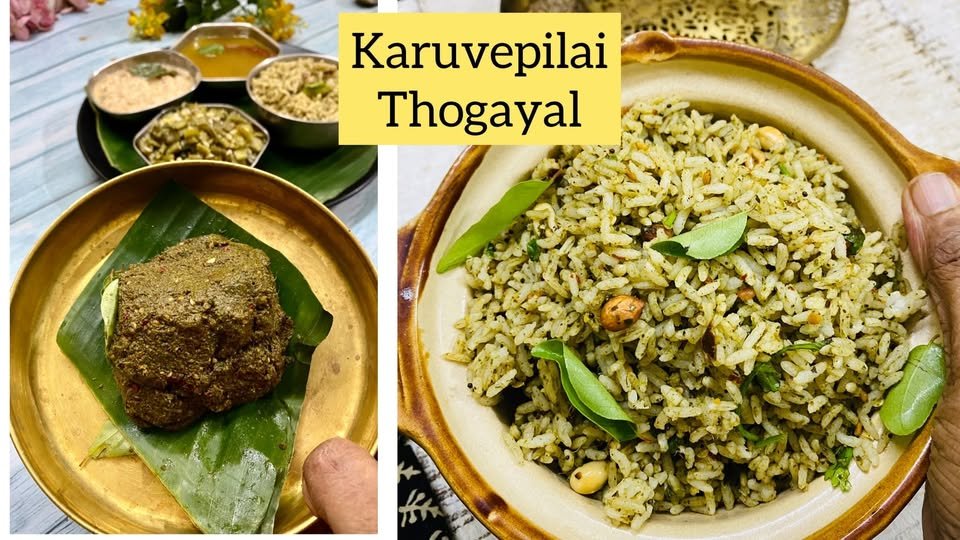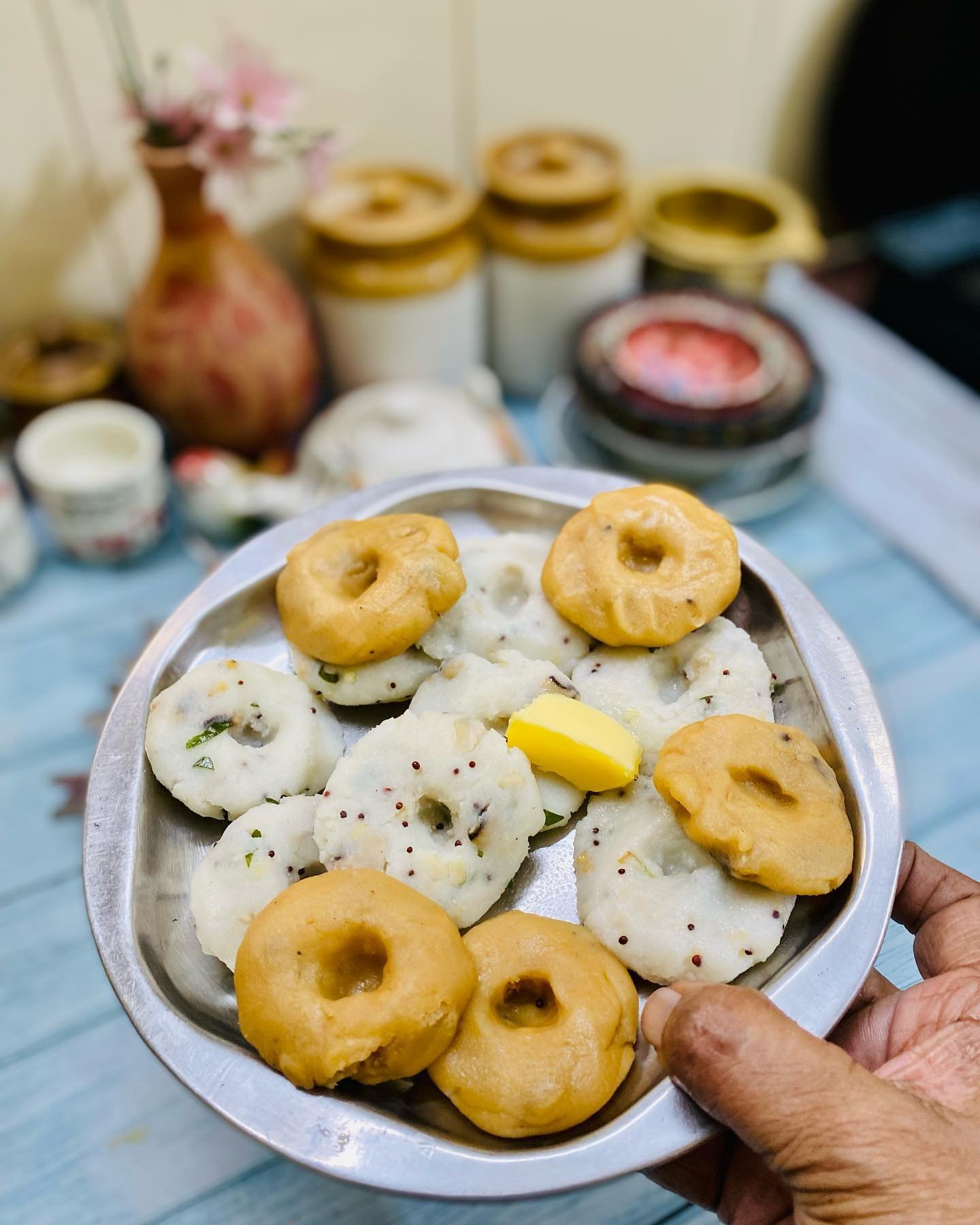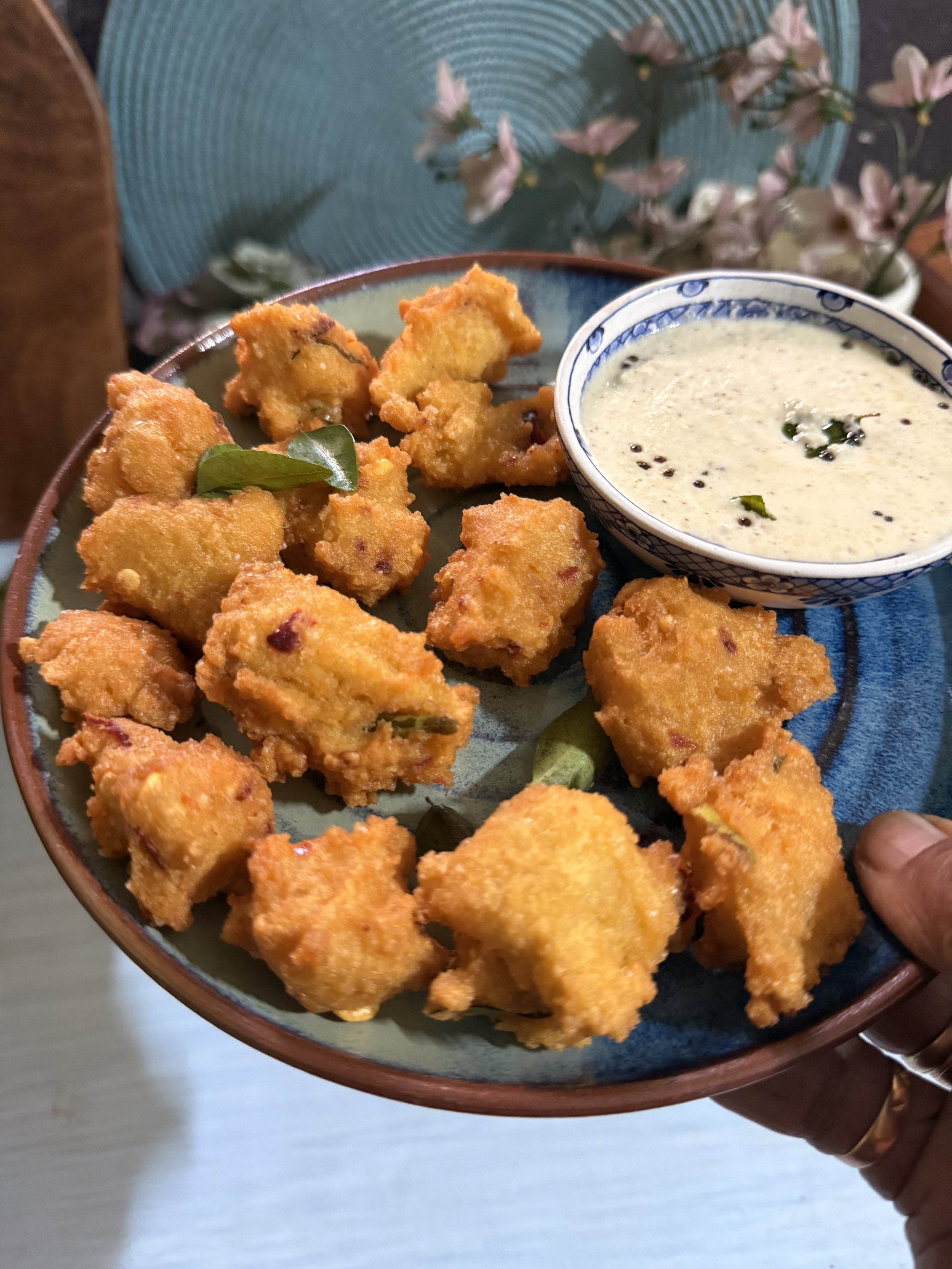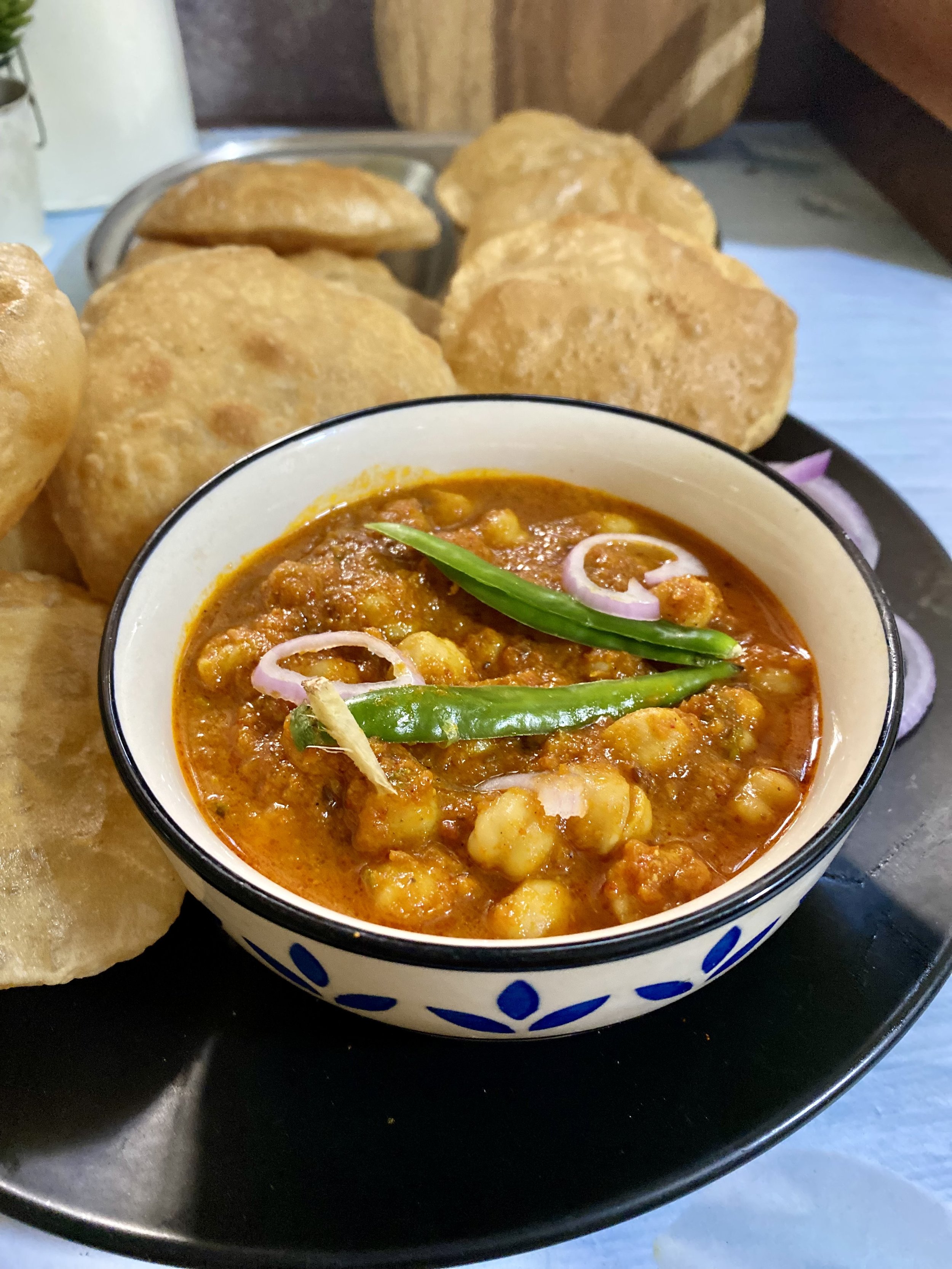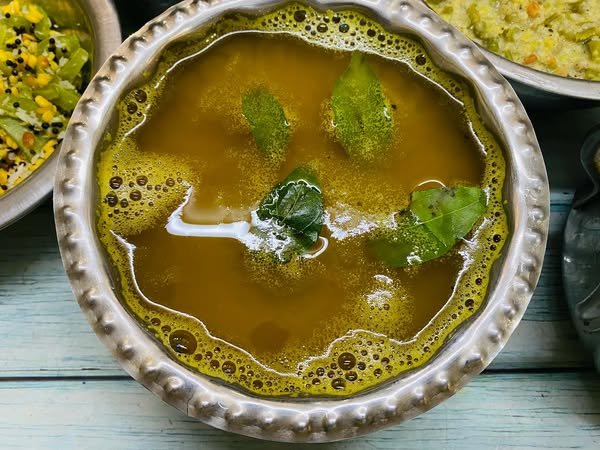Karuvepilai Kuzhambu
Karuvepilai kuzhambu
Curry leaves are very well known not only for their culinary uses but also for their medicinal values .
Curry leaf is packed with incredible nutrients to combat so many ailments and diseases that it's no wonder our moms and grandmas included it in as many dishes as possible mainly as a garnishing .
Sadly we just remove them and chuck them away as curry leaves cannot be eaten by itself . So at best you get just a curry flavor infused in the foods . But there are several ways you can have the curry leaf with its immense nutrients fully present in the form of a flavored powder , or as a spicy Thokku ( like a pickle ) and as a spread or chutney that can be used to mix with rice and eaten .
Curry leaf powder is also a handy mix to have in house to eat with rice and ghee .One of the momst popular ways to use curry leaves is i a kuzhambu form to mix with rice and enjoy .
Curry leaf Thokku is a great way to enjoy the flavors and benefit from the powerful nutrients present in curryleaves .
South Indian cooking has its signature flavor from curry leaves which may not be the main ingredient but without which the cooking is not complete especially tempering with curry leaves is very essential in all Kerala based cooking as well as Tamilnadu cusine .
Delicious healthy curry leaves kuzhambu , makes an excellent side dish for rice, curd rice or made thokku style, it can be had with idli , dosas, too .Nutrition and health benefits of curry leaf are immense and one cannot emphasize more about it .
Ingredients
With a tsp of sesame oil roast the following
2 tsp toor dal
1 tsp coriander seeds
1 tsp pepper
4 red Dry red chillies or more if you like more spicy .
1 tsp Jeera/cumin seeds
1/4 tsp Methi seeds
2 cups tightly packed washed dried curry leaves 🍃.
Other ingredients
2 cups Tamrind water extracted from a lime size Tamrind
Salt
Pinch of turmeric powder
After roasting the dals , roast the curry leaves separately in the same pan till they seem dry but not dark .
Method :
Cool and grind the dry ingredients first to a fine powder , then add the curry leaves without adding water , as I like to store some of the powder prepared this way for other recipes .
And also to store for more preparations . It saves me time of the roasting , powdering , also it helps me to use up excess curry leaves in a powder form which can be turned into or used in other recipes like preparing curry leaf rice , add to molaga podi for idli podi preparation, or to use as a garnishing curry powder for poriyals , to prepare a quick thokku , or add to sambar All these various uses are useful .
hence I prepare a dry fine powder of roasted curry leaves with the roasted dals . I add extra Tamrind paste later depending on the dish at the time of preparation.
However You can grind with water along with roasted ingredients to a smooth paste too if it is a one time preparation like many do .
I just shared my way . Sometimes I also do the paste method if I have limited curry leaves and it is a one time . I find preparing the Kuzhambu thicker almost thokku consistency will give longer shelf life and you can dilute cans use as often as you like .
This thick Kuzhambu is stored in a glass jar and works like a side dish or dip for many dishes like arisi upma , curd rice , idli , dosa .
For tempering
4 tbsp sesame oil
1 tsp Mustard seeds
1/4 tsp asafoetida powder
2 red Dry red chilli
To prepare the Kuzhambu
Take a pan , add 4 tbsp sesame oil , heat oil , add mustard seeds , allow to splutter , add red chilies , add the required qty of curry leaves powder ( or paste )sautee in oil , add Tamrind water , mix well , add asafoetida powder or water , salt , turmeric powder .
Cover and cook till the Kuzhambu reduces to desired consistency. I like to thicken as it stores well for a week .
Just a small ladle of this is enough yo mix with hot rice and enjoy . Thickening also makes it a good side dish of the Kuzhambu to go with curd rice , upma , dosa , idli .
It also makes excellent lunch box dish too .
Curry leaf has many medicinal properties. It stimulates digestive enzymes and helps break down food more easily. Have a glass of buttermilk mixed with a little hing (asafoetida) with a few curry leaves thrown after meal for good digestion.
The aroma that assaults your senses when you enter a South Indian household is that emanating from curry leaves. Curry leaves are used for seasoning in south Indian and West coast Indian cuisine, generally in fresh form. Sometimes it is oven dried or roasted immediately before use. A very common technique of using curry leaves is frying it in oil or butter at the start of the preparation.
Watch my You tube video for the method . Do subscribe to my channel for more easy recipes.
Home remedies and curry leaves
Curry leaves have the qualities of an herbal tonic. It has many herbal medicinal properties and is used widely in Ayurveda for its therapeutic properties.
A few home remedies utilizing curry leaves throughout India are:
Curry leaves are your best bet against morning sickness during pregnancy. Mix lime juice, honey juice or sugar crystals with the curry leaf juice and drink it. This prevents nausea and dry vomiting.
Curry leaves have been used for proper functioning and strengthening of stomach. For this purpose, curry leaf is mixed with finely chopped ginger, mixed with rice and taken early in the morning. This is known to reduce stomach disorders, constipation and even dizziness.
Curry leaves are known to be good for health of your hair. Mix curry leaves in hot oil (coconut oil, mustard oil) and then wait for the curry leaves to turn darker in color. Remove it from heat, let it cool and store in a glass container. Apply this oil on the scalp and let it stay overnight. This prevents premature graying of hair, nourishes the hair root, and also is a growth stimulant for hair.
Curry leaves mixed with asafetida added to butter milk, if taken daily after meals is a good home remedy for improper digestion.
A few curry leaves can be chewed daily to reduce weight.
So, next time you come across curry leaf in a dish, don’t nudge it aside, instead eat it for your lustrous hair, glowing skin and staying healthy.
Medicinal properties of curry leaves in Ayurveda
Curry leaves is an inexpensive condiment which has excellent medicinal properties. The leaves, fruits, bark and roots of curry leaf tree are used in indigenous medicine as tonic, stimulant and anti flatulent A few uses of curry leaves in Ayurveda are;
Gastrointestinal properties: curry leaves are an herbal tonic which strengthen and promote the function of stomach. They act as mild laxatives. It stimulates the digestive enzymes and helps in the breakdown of food.
Tender curry leaves are useful in dysentery, diarrhea and piles treatment.
Diabetes:
It is used in the treatment of diabetes due to heredity as well as diabetes caused due to obesity. It helps in reducing weight and hence is considered effective in reducing the level of sugar in blood.
It is a potent blood purifier and restorative of the degenerated blood cells.
It helps in the building up and strengthening of liver, and also regulates metabolism of fatty acids.
Kidney disorders: the juice of the roots of curry leaf tree is beneficial in the treatment of pain associated with kidney disorders.
Hair:
Curry leaves are known to promote hair growth and inhibit premature graying of hair. They bring about the growth of new hair which is healthier with normal melanin pigment.
Burns and bruises: Curry leaves help in healing the burns, bruises and skin eruptions. They are applied in the form of poultices over the affected area of the skin.
Eye:
Fresh curry leaf juice helps in maintaining the health of the eyes. It also prevents the growth of cataract.
Insect bites: the fruits of the citrus curry leaf trees are berries and are edible. They juice of the berries mixed with lime juice is applied over the insect stings and bites of poisonous insects for treatment.
Curry leaves in cancer
Curry leaves have a chemical called mahanin which has been found to be effective against the cure of cancer cells. It causes controlled cell death.
Curry leaves due to the presence of this chemical can cause selective death of prostate cancer cells. They are coming up as a new chemotherapeutic treatment of prostate cancer.
A notable fact is that prostate cancer is the second leading cause of death in men in US.
Curry leaves in diabetes
Curry leaves are considered a good tonic for the spleen and pancreas and increase the number of cells of the islet of Langerhans which form insulin.
Curry leaves re rich in minerals and trace minerals such as iron, zinc and copper which are known to play a role in maintaining normal glucose levels in the blood. Hence, curry leaves may be effective in the treatment of diabetes.
Curry leaves are also significant in carbohydrate metabolism and restore the functions of liver and kidney enzymes which bring about the breakdown of carbohydrates.
The antioxidant property of curry leaves is known to reduce the death of pancreatic cells and hence plays a crucial role in diabetes.
Curry leaves are also known to reduce blood sugar levels.
Curry leaves in hair and skin care
All parts of the curry leaf tree can be utilized in preparing oil by steam distillation and applied on head to prevent premature graying of hair. Oil with curry leaves mixed in it provides nourishment to the hair root. Curry leaves are also known to induce hair growth and the new hair follicles are normal with normal concentration of pigments.
Studies have also reported that curry leaves can be used to maintain natural pigmentation of the skin, and is also known to possess some amount of sun protection factor.
Curry leaves in formulation
Ortho massage oil: It is a pure herbal formulation which provides relief in arthritis, rheumatism, gout, paralysis, low back pain, rickets, removes swelling and frozen shoulder and other neuro muscular pain.
Constipation : It is an ayurvedic herbal drink promoting flatulence, and increase the appetite. It is also used for piles.
References
1. Raj MN, Peter KV, Nybe EV. Spices, New India Publishing, Vol 5, 2007, 170.
2. Pullaiah T. Encyclopedia of world medicinal plants, Daya books, Vol 2, 2006, 1380.
sources wiki


